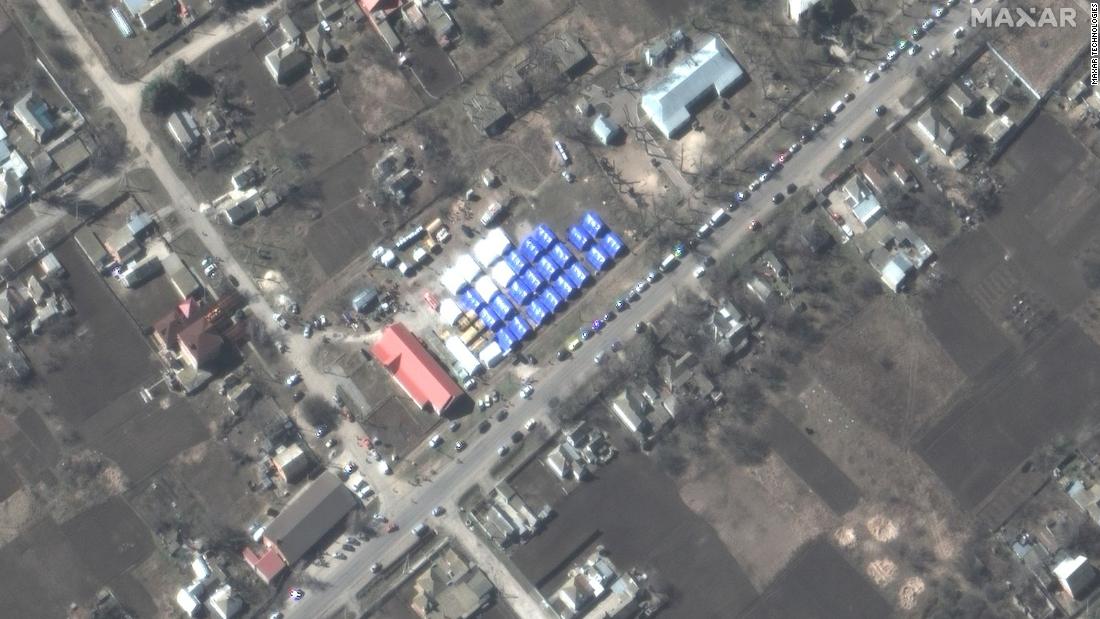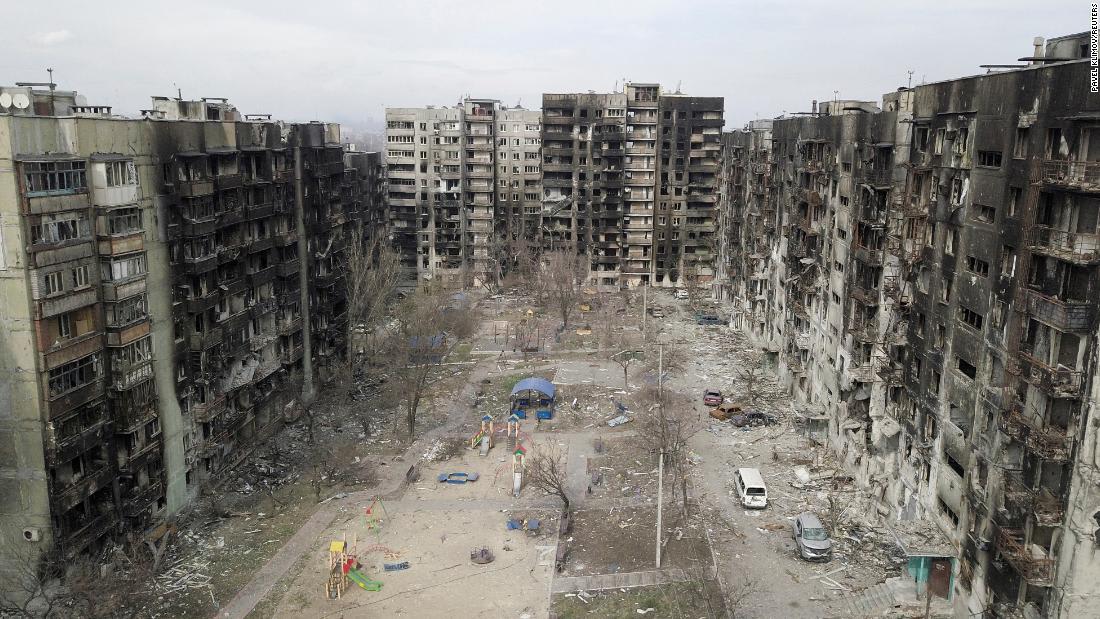Footage and photos posted over the weekend show civilians arriving by bus in the Russian-held town of Bezimenne — about 16 miles east of the besieged Ukrainian city of Mariupol — in a convoy of Russian tanks emblazoned with the letter Z and United Nations (UN) vehicles.
In the images, published by Reuters on Sunday, women, children and elderly people emerge from buses to an area lined with white tents. Some cling to bags of their belongings. One holds a cat carrier. Soldiers in unmarked fatigues, carrying rifles, patrol the area.
One woman, an employee at Mariupol’s vast Azovstal steel plant, said that she spent weeks hiding out in the maze of Soviet-era bunkers below the facility — the last remaining holdout in the embattled city. She said that she tried earlier to escape Mariupol in evacuation corridors but was unable to leave due to the relentless shelling.

“The shelling was so strong at it kept hitting near us. At the exit of the bomb shelter, on the top few steps one could breathe, as there was not enough oxygen. I was afraid to even walk out and breathe some fresh air,” said the employee.
I can’t believe it. Two months of darkness. When we were in the [evacuation] bus I told my husband ‘Vasya, won’t we have to go to the toilet with a flashlight? And not to use a bag, a bin [as a toilet] with a flashlight,” she added. “We did not see any sunlight. We were scared.”
Over the weekend, both Ukrainian and Russian officials said dozens of civilians were evacuated from the plant and surrounding area by the UN and International Committee of the Red Cross (ICRC). Ukrainian President Volodymyr Zelensky said on Sunday that about 100 people were rescued from Azovstal and headed to Zaporizhzhia, and there were hopes that more would be able to leave on Monday.
Russia’s defense ministry reported that 46 people left the wider Azovstal complex on Saturday, and that 80 civilians were “rescued” from the works Sunday, before they were taken to the self-declared Donetsk People’s Republic (DPR). The ministry said that a number of these people had “voluntarily decided to stay in the DPR,” which has been controlled by Russian-backed separatists since 2014.
While the ministry claimed that civilians evacuated from Azovstal who wished to leave for Ukrainian-held areas were “handed over to representatives of the UN and the ICRC,” it is unclear whether all were given the choice of where to go next.
A CNN investigation in April revealed that Russian forces and allied separatist soldiers were taking Mariupol residents to a so-called “filtration center” set up in Bezimenne, where they were registered before being sent on to Russia — many against their will. Ukrainian government and local Mariupol officials say that tens of thousands of Ukrainian citizens have been forcibly deported to the Donetsk People’s Republic and Russia since the war began.
In April, CNN interviewed 10 people, including local Mariupol residents and their loved ones, who were taken by Russian and DPR soldiers to Russian-held towns against their will before being deported to the Russian Federation.
CNN spoke with two people who were brought to Bezimenne before being sent to Russia. They described a massive military tent, where Russian and DPR soldiers were processing hundreds of people — they were fingerprinted, photographed, their phones searched, interrogated, passports reviewed and registered into databases.

Satellite images from Maxar Technologies reviewed by CNN show a tent encampment in Bezimenne. According to Mariupol’s mayor Vadym Boichenko, it is one of four “filtration camps” that the DPR and Russia are operating around the city.
We have the official statistics which we have verified with the community registry — over 40,000 local residents who went through the filtration and turned out either in the so-called DPR or Russian Federation,” Boichenko said on April 25. “Some Mariupol residents have managed to get to Ukrainian controlled territories now and testify on the whole process.”
A day before, in his nightly address, Zelensky said that the government was continuing to monitor Russia’s “so-called filtration camps” near Mariupol. “The facts of deportation of our citizens to the Russian hinterland, to Siberia, and even to Vladivostok have been recorded,” he said. “Children are also deported. They hope that kids will forget where their home is, but they are from Ukraine.”
The Fourth Geneva Convention prohibits an occupying power from deporting or transferring civilian populations. Ukraine’s prosecutor general and international rights monitors have said that Russia’s forcible removal of civilians could amount to a war crime.
Moscow has continued to claim that it is evacuating civilians from dangerous regions of Ukraine. Russian Colonel-General Mikhail Mizintsev said on Saturday that more than 1 million Ukrainians, including nearly 200,000 children, had been evacuated to Russia so far, according to TASS.
Read CNN’s investigation into Russia deportations here:
